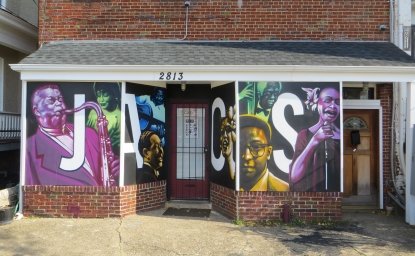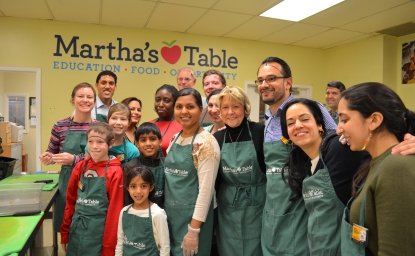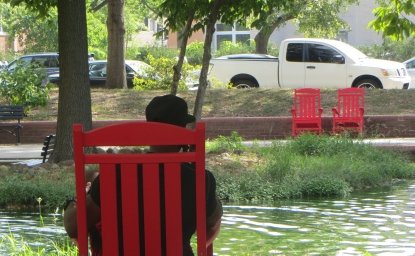For more than a century, Medellín has been known world-wide. For Spanish-speaking members of the “Greatest Generation,” Medellín is where Argentine tango great Carlos Gardel, probably the most popular Latin singer of his generation, was martyred in a fiery crash at the local airport in 1935. For “Boomers,” the city’s name is synonymous with the world’s most notorious drug lord Pablo Escobar. For so-called “Millennials,” Medellín has become the poster child for urban renewal.
Colombia’s second city has long punched well above its weight in terms of international notoriety. Nestled at some 5,000 feet about sea level in one of the northernmost Andean valleys, the Aburrá, Medellín is an unlikely candidate for fame. Though established as a town in by Spanish colonists in1616, and selected as capital of the Antioquia in 1826, Medellín remained a peaceful out-of-the-way settlement of some 15,000 residents at the time of Colombia’s independence in 1810. The arrival of the railroad and consequent industrialization changed everything. The city’s population grew from 60,000 in 1905 to 360,000 in 1951, to 2.5 million today. Yet, so has the populations of other similar cities far less known. Why has Medellín managed to matter beyond itself?
The answer lies in part in an assertive entrepreneurial class that has long turned to global markets to make money. The city has grown prosperous by exporting gold, then by growing and selling coffee, followed by textiles, illegal narcotics (which would make the city the most dangerous in the world by the early 1990s), and now flowers (and coffee once again). Medellín is home as well to the continent’s largest fashion show, Columbiamoda. The city’s economy, in other words, long has relied on producing and purveying goods that capture peoples’ imaginations.
The city’s latest acclaim as a model of urban renewal is perhaps the most unexpected of all its accomplishments over the decades. For a city to be known as “murder capital of the world” in living memory to be awarded the title 2013 “Innovative City of the Year” ahead of New York City and Tel Aviv and host the United Nations HABITAT’s World Urban Forum a year later challenges credulity; and yet this is what has happened.
Any story as complex as the transformation from being a global symbol for despair into worldwide fame as a center of hope necessarily incorporates too many dimensions to be captured in a single article. There are many interwoven threads to such a tale ranging from pacification of drug cartels through the extraordinary civic leadership by such gifted and accomplished mayors as Luis Alfredo Ramos (1992-1994), Sergio Fajardo (2004-2007) and Aníbal Gaviris (since 2012). Leaders need visions to mobilize those around them. One seemingly counterintuitive component of the Medellín vision deserves special mention. By using smart design and innovative transportation infrastructural development the city’s leaders have striven consistently to include the excluded in the city’s mainstream economy and society. Their approach, in other words, has been diametrically opposed to the building of gated communities that increasingly blight the urban and suburban landscape everywhere.
For Medellín’s planners, no building is too beautiful to be denied the city’s least privileged resident. The more striking a project appeared to be, the more likely it would be built in the poorest barrio. Giancarlo Mazzanti’s striking Parque Biblioteca España, a massive public library which won several major architectural awards when it opened in 2008, sits perched above the city in the long troubled Santo Domingo neighborhood. One of a half-dozen major libraries constructed by public authorities to bring learning and information closer to the poor, the Spain Library opens the world to local residents who previously had been trapped within the confines of their own self-built twisting streets isolated above the city.
The library, in turn, stands next to perhaps the world’s most unusual public transit systems – one of three aerial tramways which carry 50,000 passengers a year up and down Medellín’s steep hills linking the poorest and most well-to-do. There is an easily accessible library for children to study, read, and access the internet at the Acevedo metro station where gondola and metrorail seamlessly connect. Rail, aerial tram, and Bus Rapid Transit lines encourage all in Medellín to move about the city as they work, learn, and play. At a time when an impulse for communities – be they rich or poor or somewhere in between – to close themselves off from their neighbors – to pull up the drawbridge and fill the moat – Medellín offers a counter example of how easier contact can, in fact, build a sense of community that enhances rather than diminishes security.
Just as Medellín appeared to reach its nadir two decades ago, those with responsibility for Medellín’s future – political, business, civic, health, educational, and community leaders – built a world-class metro system explicitly as social policy rather than merely as a solution to transportation problems. They did so to bring all elements of the city together, to give everyone a stake in a shared fate. By doing so, they revealed an exceptional inventiveness. They also showed how they were learning lessons already learned elsewhere, for another important aspect of the remarkable Medellín story lies in a deep connection with Barcelona.
Those who took over the Catalan city following the death of Generalissimo Franco in 1975 faced many challenges similar to those confronting Medellín a generation later. Committed to knitting together the disparate elements of a fragmented city — and hindered by empty public coffers — those who rebuilt Barcelona turned to small interventions creating well designed public space where there had been none previously, to enhanced public transportation, and to seashore promenades encouraging people who lived apart to find a shared destiny. Helped along by the planning and construction of the 1992 Olympic Games, Barcelona successfully converted a grey, shabby, and depressed authoritarian city into a glittering symbol of international success.
Many sons and daughters of Medellín came to Barcelona during these years to study, learn, live, and earn a livelihood. They experienced a city transforming itself for the better every day; and, they took these lessons back with them to Colombia when they returned.
The subsequent history of Barcelona similarly offers lessons for Medellín. Over time, as the generation leading the post-Franco transition has moved on, Barcelona’s impulse to reform has subsided. Barcelona certainly remains one of the world’s most remarkable urban success stories, a delightful city that fully embraces its considerable Mediterranean assets. Yet, the city is something less of a landmark of innovation now than it was a generation ago. More recent migrants from North Africa, for example, are not welcomed as amiably as a generation ago, economic growth has stalled, and the politics of division have returned.
Medellín today is at a similar breakthrough moment as that of Barcelona in 1992. The additional lesson from the Catalan city, then, is that successful urban governance and innovation is not a moment of static achievement. Cities continue to evolve, to grow and to decline, to confront new challenges even as old pathologies resurface. The job of innovative urban management is never finished; boxes once checked need to be re-visited forever; and lessons once learned must be learned over and over again.






